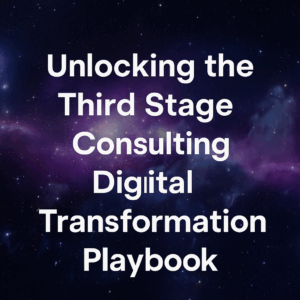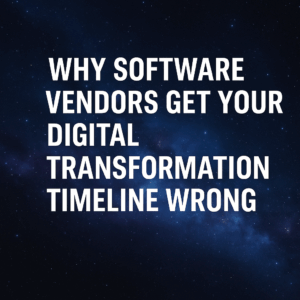Don’t underestimate the influence of Generation Y (Millennials) or Generation Z (Gen-Z) on how the top ERP systems will continue to evolve. They are changing the rules both as employees and consumers. Their preferences and actions are dramatically altering how businesses operate as well as how they use technology, and at an ever-increasing pace.
As an example, in a recent study by Twilio, it was discovered that across Asia, Europe, and the United States, 89% of customers would prefer to communicate with businesses via SMS text. … the times they are a changin.’
As a result of this growing influence, which is slowly but surely being embraced across nearly all age groups, we are seeing a tremendous uptick in requests for automation and reduction of human interaction.
Table of Contents
ToggleThe ERP Software Connection
Whether your talking about machine learning, internet of things, artificial intelligence, etc. ERP software is enabling business transactions with less and less human interaction. This self-service concept is becoming more mainstream for a few of reasons:
- ERP software has evolved to the point where it can allow a self-serve methodology to work efficiently and potentially save companies money. Algorithms help point clients in the right direction towards ready-to-use pathways. When done right, this is a win-win. The client gets to interact/transact in their preferred way, and the company can redeploy its human assets.
- HCM software and employee self-service (ESS) is a good example. Employees being able to access their employment information whenever they want or need – enabled by HCM software Yes, employees being able to gain access to private information without ever having to talk to a live HR person. Theoretically this frees up HR professionals to spend their time on less administrative functions.
- Instant gratification. We are becoming a society that doesn’t want to wait. Blend this with tech-savvy clients who are most comfortable doing their own research or ordering. The trend is to automate conversations because evidence is that millennials don’t like to talk on the phone.
- Depending on your business, self-serve technology can expand your window of opportunity to market and sell. Companies are experimenting and succeeding with promotions launched at nontraditional times and targeting unique campaigns through marketing automation.
Opportunity = Risk
While I’ve just described the opportunity, you should also consider that opportunity is always balanced by risk:
- Companies would be wise to also evaluate longer-term customer service impacts. Most of our clients describe their “business success” as directly related to their customer service capabilities. Does automation dilute customer satisfaction and loyalty? Does the relationship become purely transactional? How does a company differentiate its products?
- Housing data is always a security risk … personal data being a good example. Remember the Equifax hack? Attackers will increasingly continue to exploit vulnerabilities, and software manufactures will continue to spend more and more on data security. Thus, each automation initiative is typically tied to multiple risks. The good news is that many of these risks can be managed. The Equifax debacle was allegedly caused by a software update that wasn’t installed in a timely manner. How would you like to explain that $1.4+ billion-dollar delay?
- Repeat business and customer loyalty increases profits – not to mention generating new referrals. Self-serve automation can dilute this. It can also dilute the size of an order or sale. McDonald’s has found that orders placed via in-store kiosks are lower than purchases at the counter.
- Have a plan for those preferring to talk with a live customer service representative, or risk losing their business. Do you make it easy or methodically torture them through continuous automated prompts? For some of your customers automating the conversation will never be a rewarding experience. This should be considered in order to create a better customer experience as part of your digital transformation.
Fine Tuning Your Engine
There is a lot to be said for allowing your customers access to tools that add value. Think of how video continues to influence and educate. Part of the key to success is measuring how clients find their solutions – does it take multiple clicks on your website or is it intuitive and efficient? Algorithms and other tech tools can help, so there’s nothing wrong with embracing the do-it-yourselfers. Just keep in mind that adjusting the tech and navigation processes should be an ongoing process.
We worked with a company that created their own unique emoji to thank clients once an order was placed – and customer feedback was good. If that sounds silly, consider that phone calls are only the fifth or sixth most used function on smartphones. The point being, a customer initiating a transaction is an opportunity and one that should probably not end with that transaction, so be creative in ways that reflect your company’s culture.
Understanding your audience and the academics of customer service is as important as ever. What happened to those Nordstrom feel good legendary customer service stories I learned about in marketing class? Well, they’ve been replaced with Amazon stories of instant order, fast delivery and mobile notifications. To my knowledge, Nordstrom doesn’t sell fake stuff, so maybe Amazon ought to use some of their digital transformation wizardry to ensure the quality of their goods.
Nike recently announced that it will stop selling their brand on Amazon because of third-party sellers mucking up their reputation with fake stuff. Amazon’s super-fast delivery model is also eating into their profits. And good old Nordstrom – the people company, is financially spiraling because of the general trend (impacting many retailers) of shoppers no longer wanting to visit physical stores.
Automation should be accompanied by a well thought out overarching digital strategy that encompasses a “client first” approach. The trick is to understand that you likely have multiple audiences and find the appropriate balance of technology for your organization.





